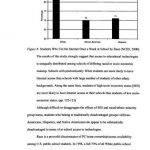Utility of the level of service inventory-revised (LSI-R) in predicting recidivism: Do gender and offense type matter?
The creators of the LSI-R contend that this risk assessment is a `gender neutral’ tool while feminist scholars remain skeptical as to the LSI-R’s empirical ability to predict female recidivism as the tool was developed on male-centered theories. Research findings on the gender effect on the predictive validity of LSI-R are mixed. Very little research is available as to the effect of offense type on the tool’s predictive utility.
Using the disaggregated data by gender and offense types, this research aimed to determine the moderating effects of gender and offense type on the predictive utility of the Level of Service Inventory- Revised (LSI-R). This dissertation divided offense type into four categories: sex offense, person offense, property offense and drug offense. This dissertation used a sample of offenders (n=2,917) from the Kansas Department of Corrections (KDOC) who released in fiscal year 2008 (July 1, 2007- June 30, 2008). Data was collected for these offenders for a 36 month follow-up period to assess for any instances of recidivism.
After controlling for offense type, logistic regression analyses showed that the LSI-R is the valid risk assessment for both male and female offenders. With the major research question of moderating effect of gender, this study found that the different subscales predict recidivism between genders. Regardless of offense type, the LSI-R total score proved to be a significant predictor of recidivism.
Like the moderating effect of gender, the moderating effect of offense type in the predictive validity of LRI-R was supported.
Though this dissertation found support for the predictive utility of the LSI-R across gender and offense type, no statistically significant subscale predicting recidivism for female property offenders was found. Furthermore, because statistically significant subscale predictors of recidivism varied across offense type and gender, it is recommended that future research further examines the predictive validities of subscales. Given the finding of this study that only few subscales reached the statistical significance to predict recidivism across offense type and gender, other factors should be considered to assess need and risk. Replication of this study using different samples is recommended.
Find an electronic copy at your library.
Use the link below to access a full citation record of this graduate work:
If your library subscribes to the ProQuest Dissertations Theses (PQDT) database, you may be entitled to a free electronic version of this graduate work. If not, you will have the option to purchase one, and access a 24 page preview for free (if available).
About ProQuest Dissertations Theses
With nearly 4 million records, the ProQuest Dissertations Theses (PQDT) Global database is the most comprehensive collection of dissertations and theses in the world. It is the database of record for graduate research.
PQDT Global combines content from a range of the world’s premier universities – from the Ivy League to the Russell Group.
Of the nearly 4 million graduate works included in the database, ProQuest offers more than 2.5 million in full text formats. Of those, over 1.7 million are available in PDF format. More than 90,000 dissertations and theses are added to the database each year.
If you have questions, please feel free to visit the ProQuest Web site – proquest.com – or contact ProQuest Support.
2016 ProQuest. All rights reserved. Terms and Conditions






 Sop writing services bangalore time
Sop writing services bangalore time Dissertation help service singapore hotels
Dissertation help service singapore hotels L usager du service public dissertation abstract
L usager du service public dissertation abstract Dissertation proposal writing service uk samsung
Dissertation proposal writing service uk samsung Dissertation proposal sample master service
Dissertation proposal sample master service






